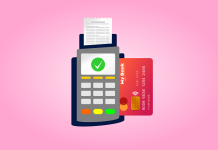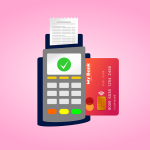Starting with new software can feel overwhelming, especially when it’s built to manage multiple tasks and workflows. Software RCSDASSK is designed to simplify work, automate repetitive processes, and help teams stay organized, but its full potential shows only when you set it up correctly. This guide walks you through each step so you can begin using new Software RCSDASSK confidently from day one.
Table of Contents
Understanding the Software RCSDASSK Dashboard
Once you log in, the dashboard is the first thing you see. It acts as the control center where all tools, tasks, and activity summaries are displayed. The interface is divided into panels such as “Projects,” “Tasks,” “Automation,” and “Reports.” Each section is clearly labeled, making it easy for beginners to explore without confusion. Before doing anything, take a moment to hover over icons and familiarize yourself with the layout — it will make the later steps easier.
Step 1: Create Your Account & Set Up Your Profile
Start by creating your RCSDASSK account using your email or team login. After verification, move to your profile settings. Add your name, role, time zone, and notification preferences. This ensures that reminders, updates, and schedules appear correctly. It may seem minor, but proper profile setup helps the software deliver accurate alerts and personalized suggestions.
Step 2: Customize Your Workspace
Software RCSDASSK allows users to customize their workspace to match their working style. You can choose which tools appear on your home screen, rearrange panels, and select themes for better visibility. If your work requires frequent tracking, add the analytics widget. If you manage multiple teams, place the “Team Tasks” panel on top. The goal is to design a workspace where you can see the most important information immediately.
Step 3: Add Your First Task or Project
To start using the software effectively, create a practical project. Click on “New Project”, add a title, and define its purpose. Within the project, add tasks with deadlines, labels, and priority levels. This structure helps RCSDASSK organize your workflow and allows you to track progress easily. For individuals, simple to-do lists work perfectly; for teams, larger multi-step projects are more useful.
Step 4: Automate Repetitive Actions
One of the strongest features of Software RCSDASSK is automation. Instead of performing the same actions repeatedly, you can set triggers and rules. For example:
-
When a task is completed, the next task automatically activates.
-
If a deadline approaches, the software sends reminders.
-
Updates can move from one stage to another without manual input.
Automation not only saves time but also reduces the chances of missing important steps, especially in large projects.
Step 5: Collaborate With Team Members
Software RCSDASSK supports easy collaboration. Invite team members to your project, assign tasks, and set permissions based on their roles. The built-in communication tools let you leave comments, upload documents, or tag teammates for quick updates. With everything stored in one place, teams can avoid long email threads and miscommunication.
Step 6: Track Progress in Real Time
As work moves forward, RCSDASSK updates progress bars, activity logs, and status labels automatically. The real-time tracking helps you identify delays, monitor productivity, and ensure tasks are on schedule. For managers, this feature is particularly useful because they can see team performance without constant follow-ups.
Step 7: Export, Save, or Integrate Your Work
RCSDASSK supports exports in multiple formats, making it easy to share reports or save backups. You can export summaries, project timelines and task reports.

If your workflow includes external apps, RCSDASSK also allows integrations with calendars, email tools, and cloud storage. Connecting these tools creates a seamless workflow and reduces the need to switch between platforms.
Common Mistakes New Users Should Avoid
New users often overload their dashboard with unnecessary widgets, which makes navigation harder. Start simple — add more tools only when needed. Another mistake is ignoring automation. Even basic automation rules can significantly improve efficiency. Lastly, avoid creating messy task lists. Proper labels, deadlines, and categories make long-term work much easier to manage.
Tips to Get the Most Out of RCSDASSK
Use shortcuts to move quickly between sections, regularly archive completed tasks, and review your dashboard weekly to keep everything organized. Explore hidden features like advanced filters and smart search to save time when handling large projects. Consistency matters: the more regularly you update tasks, the more accurate the software’s insights become.
Conclusion
Software RCSDASSK is built to simplify work, support collaboration, and reduce the time spent on routine tasks. By setting up your account properly, creating structured projects, and using automation from the beginning, you’ll get a smooth, efficient workflow. Once you understand the system, RCSDASSK becomes a reliable tool that keeps your work organized and your team aligned.








































